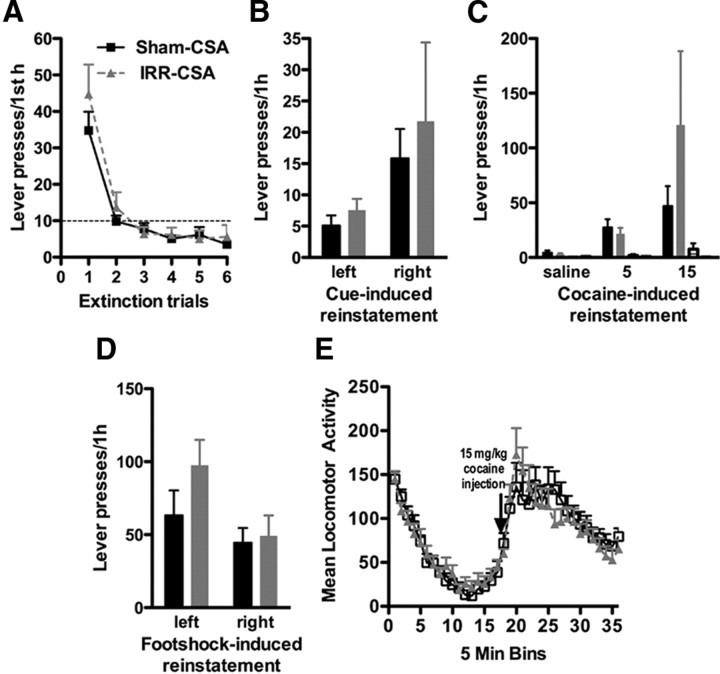Figure 7.
Cranial irradiation before cocaine self-administration does not change relapse to drug-seeking. A, Context-induced reinstatement. Irradiated rats did not press more than sham rats on the formerly drug-paired lever when reexposed to the self-administration chamber after 4 weeks of abstinence. B, Cue-induced reinstatement. Irradiated rats did not differ from sham rats in drug-seeking in response to drug cues. C, Drug-induced reinstatement. Response to pressing the left, formerly drug-paired lever (leftmost pair of bars) or right, formerly drug-unpaired lever (rightmost pair of bars) after intraperitoneal injection of saline or 5 or 15 mg/kg cocaine in sham and irradiated rats. Irradiated rats did not differ from sham rats in drug-seeking in response to low-dose cocaine injections. Right lever presses are presented but are under five for both irradiated and sham groups at each dose of cocaine. D, Footshock stress-induced reinstatement. Lever pressing between irradiated and sham-irradiated rats in response to footshock stress was not significantly different. E, Locomotion assessment. Irradiated rats were not impaired in either basal locomotion or cocaine-induced locomotion (15 mg/kg, i.p.). Data are presented as mean ± SEM.

